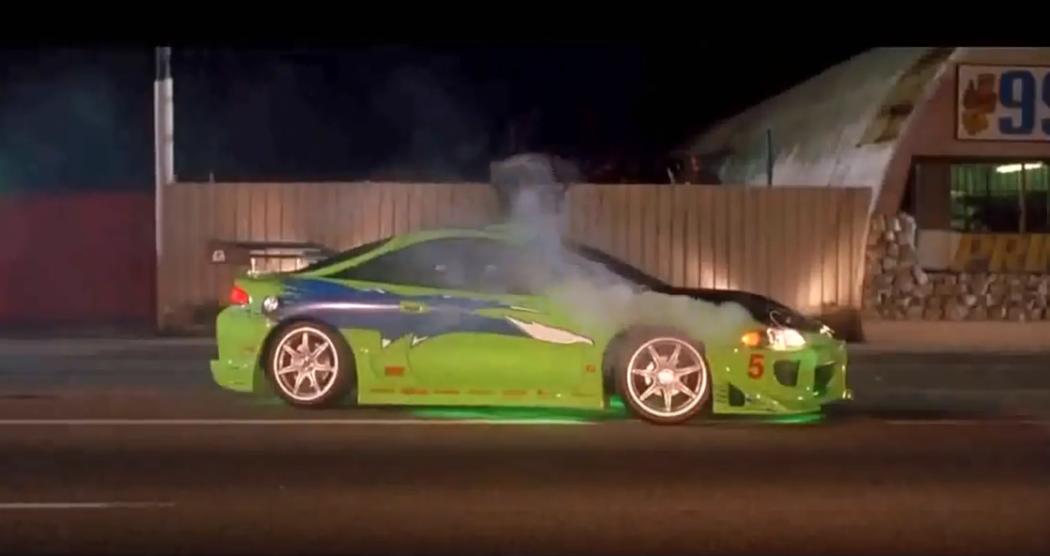In the dynamic world of automotive enthusiasts, various subcultures emerge, each with its unique style, preferences, and controversies. One such subculture that has gained attention over the years is the “ricer” car culture. Ricer cars, often a topic of heated debate within the automotive community, have garnered both fervent supporters and staunch critics. This article takes an in-depth look at ricer cars, exploring their origins, defining characteristics, the influence of popular media, controversies, and frequently asked questions surrounding this unique phenomenon.
Origins and Evolution of Ricer Culture
The term “ricer” has its origins in the late 1990s and early 2000s, when a particular style of car customization began to emerge predominantly in the import tuner scene. The name itself is a derogatory slang term derived from the word “rice,” which was commonly used to describe Asian-made vehicles. Ricer cars are characterized by their exaggerated visual modifications, often inspired by the aesthetics of high-performance racing vehicles.
What initially started as a grassroots movement of car enthusiasts seeking to personalize their rides quickly transformed into a distinctive subculture. Ricer culture focuses on the external appearance of vehicles rather than enhancing their performance. This aesthetic-driven approach led to the adoption of flamboyant body kits, oversized wings, colorful decals, and vibrant paint jobs.
Defining Characteristics of Ricer Cars
Ricer cars exhibit several defining characteristics that set them apart from other automotive styles. These characteristics emphasize show over performance and often provoke strong reactions from both within and outside the car enthusiast community. Some key features of ricer cars include:
1. Loud and Elaborate Body Kits
Ricer cars proudly don extravagant body kits that transform their appearance into something akin to a high-speed, high-style racer. These kits, featuring aggressive front bumpers, side skirts, and rear diffusers, are carefully crafted to accentuate the vehicle’s visual appeal. Drawing inspiration from the sleek lines of professional race cars, these body kits are more than just an aesthetic choice – they’re an expression of the owner’s creative spirit.
| Characteristic | Description |
|---|---|
| Loud and Elaborate Body Kits | Ricer cars feature extravagant body kits with bold front bumpers, side skirts, and rear diffusers. These kits enhance the visual allure of the vehicle, inspired by the aesthetics of race cars. |
2. Oversized Wings and Spoilers
One of the most iconic elements of ricer cars is the prominent presence of oversized wings and spoilers. These features serve as a nod to the world of high-performance racing, where aerodynamics play a critical role. While the actual impact on aerodynamics might be up for debate, there’s no denying the visual impact these wings bring to the table.
| Characteristic | Description |
|---|---|
| Oversized Wings and Spoilers | Ricer cars proudly sport large rear wings and spoilers, reminiscent of high-performance racing vehicles. Despite their impact on aerodynamics being questioned, they remain a quintessential ricer style element. |
3. Colorful Decals and Graphics
In the realm of ricer cars, visual expression knows no bounds. Vibrant decals, graphics, and logos envelop the vehicle’s exterior, transforming it into a canvas that showcases the owner’s personality. From bold racing stripes that scream speed to intricate patterns that demand a closer look, these designs are carefully selected to turn heads and initiate conversations.
| Characteristic | Description |
|---|---|
| Colorful Decals and Graphics | Ricer cars don a vibrant array of decals, graphics, and logos that adorn the exterior. These designs range from racing-inspired stripes to intricate patterns, serving as attention magnets. |
4. Stance and Wheel Fitment
Ricer cars achieve an eye-catching stance by embracing lowered heights and extreme wheel fitment. This style choice prioritizes aesthetics over practicality, creating a dynamic visual profile that exudes confidence and flair. Stretched tires and aggressive camber settings further contribute to this distinctive look.
| Characteristic | Description |
|---|---|
| Stance and Wheel Fitment | Ricer cars master the art of lowered stance and extreme wheel fitment. These modifications result in an attention-grabbing appearance, often featuring stretched tires and bold camber settings. |
5. Neon Lights and Underglow
When the sun sets, ricer cars truly come alive. Neon lights and underglow kits illuminate the vehicle’s undercarriage, transforming it into a moving spectacle that captures the essence of nightlife. These vibrant lights create a captivating aura that’s hard to ignore.
| Characteristic | Description |
|---|---|
| Neon Lights and Underglow | Ricer cars embrace neon lights and underglow kits, casting a mesmerizing glow that makes them stand out in the nocturnal urban landscape. |
6. Excessive Accessories
The ricer car experience extends beyond the exterior, delving into the interior where creativity knows no bounds. Racing seats, colorful upholstery, and elaborate audio systems combine to create an interior that’s as captivating as the exterior. It’s a space where the owner’s personality and passion are on full display.
| Characteristic | Description |
|---|---|
| Excessive Accessories | Ricer cars boast interior modifications like racing seats, vibrant upholstery, and intricate audio systems. These additions contribute to the overall ricer aesthetic. |
Influence of Popular Media

Movies
Picture this: neon lights casting a fluorescent glow, turbocharged engines roaring, and sleek cars hurtling down urban streets. Enter the “The Fast and the Furious” franchise, a cinematic saga that metamorphosed the subculture into a globally recognized entity. These films peeled back the curtain on import tuner cars, unveiling a world of striking modifications and high-octane street races. The influence of these movies on ricer aesthetics cannot be overstated; they not only thrust ricer culture into the mainstream spotlight but also beckoned a broader audience into the enchanting realm of modified vehicles.
| Media Influence | Impact on Ricer Culture |
|---|---|
| Movies: “The Fast and the Furious” | This franchise revolutionized ricer culture, unveiling the artistry behind modified cars and street racing. Its impact spread far and wide, familiarizing the masses with the mesmerizing allure of ricer aesthetics. |
Television Shows
While movies set the stage, television shows seized the spotlight, propelling ricer culture to new heights of recognition. Various programs turned their lenses onto the world of modified cars, dedicating segments and episodes to the vibrant universe of ricer aesthetics. This exposure not only celebrated the ingenuity behind each custom creation but also fostered a sense of camaraderie among enthusiasts who found a community on screen.
| Media Influence | Impact on Ricer Culture |
|---|---|
| Television Shows: Car Customization Features | Television shows that showcased car customization ignited the passion within ricer culture, fostering a community and celebrating the craftsmanship behind each unique modification. |
Video Games
Enter the pixelated realm of possibilities: the “Need for Speed” series, a digital haven where richer culture found a playground for its creative spirit. Gamers could indulge their fantasies by customizing virtual cars with the very elements that define ricer aesthetics: flamboyant body kits, oversized spoilers, and vibrant decals. This immersive experience allowed players to experiment, tinker, and truly understand the DNA of ricer culture, further amplifying its visibility.
| Media Influence | Impact on Ricer Culture |
|---|---|
| Video Games: “Need for Speed” Series | The “Need for Speed” games became a canvas for enthusiasts to explore and embrace ricer-style modifications virtually. This exposure nurtured the subculture’s growth by providing an interactive platform for enthusiasts to experiment. |
Controversies Surrounding Ricer Culture

Ricer culture is not without its controversies and critics. The automotive community is divided on the merits of ricer cars, with debates often focusing on the emphasis on style over substance. Some of the common controversies associated with ricer culture include:
Performance vs. Aesthetics
At the heart of the controversy surrounding ricer culture lies the ongoing debate between performance and aesthetics. Enthusiasts from all corners of the automotive community engage in heated discussions about whether ricer cars truly embody the essence of car culture or merely prioritize visual flair over substantive enhancements.
- Arguments for Performance: Critics of ricer culture contend that the essence of car enthusiasm lies in the mechanical prowess and performance capabilities of a vehicle. They assert that focusing solely on visual modifications is a disservice to the rich history of automotive engineering and innovation;
- Arguments for Aesthetics: On the other hand, proponents of ricer culture emphasize the artistic aspect of car modification. For them, a vehicle is a blank canvas for self-expression, allowing individuals to convey their personality and creativity through eye-catching visual enhancements.
To put it in perspective, here’s a comparison table highlighting the key points of contention:
| Performance | Aesthetics |
|---|---|
| Prioritizes mechanical enhancements | Prioritizes visual modifications |
| Celebrates automotive engineering | Celebrates personal expression |
| Driven by performance metrics | Driven by artistic flair |
Safety and Functionality
One of the most glaring controversies linked to ricer culture revolves around the impact of extreme modifications on safety and functionality. Ricer cars are often characterized by striking modifications like aggressive camber settings and stretched tires, which can have far-reaching consequences.
- Handling and Safety: Detractors argue that altering a vehicle’s geometry beyond its intended specifications can lead to compromised handling and reduced safety. Aggressive camber settings, for instance, might provide an appealing aesthetic, but they can result in unstable and unpredictable handling dynamics;
- Tire Wear and Braking Performance: The stretched tire trend, where tires are fitted onto rims wider than their recommended width, can significantly affect tire wear and braking performance. This alteration not only undermines the intended tire-to-road contact but also raises concerns about how a vehicle responds during emergency braking situations.
Visualizing the potential drawbacks, here’s a bullet list outlining the safety and functionality concerns:
- Aggressive camber settings can lead to unstable handling;
- Stretched tires can compromise braking efficiency;
- Extreme modifications might negate intended safety features;
- Unpredictable vehicle dynamics under different road conditions.
Cultural Appropriation
The controversies surrounding ricer culture extend beyond mechanical and safety concerns. Critics have voiced reservations about the use of the term “rice” itself, as well as the incorporation of Asian-inspired aesthetics within the subculture.
- The Term “Rice”: The origin of the term “rice” is rooted in the automotive world’s history, referring to ostentatious and excessive modifications. However, some argue that the term perpetuates stereotypes and misunderstandings, potentially diluting the true spirit of ricer culture;
- Asian-Inspired Aesthetics: Ricer culture often incorporates visual elements inspired by Japanese car tuning. While some enthusiasts embrace these influences as a form of admiration, critics caution against the unintentional misrepresentation or appropriation of a cultural aesthetic.
Let’s break down these aspects into a well-structured table:
| Cultural Aspect | Perspectives |
|---|---|
| “Rice” Terminology | Historical reference or perpetuation of stereotypes? |
| Asian-Inspired Aesthetics | Appreciation or cultural appropriation? |
Environmental Impact
The river culture’s penchant for extravagant modifications raises concerns about its environmental impact. As vehicles undergo extensive alterations, including engine modifications and aerodynamic changes, questions arise about the potential escalation of fuel consumption and emissions.
- Fuel Consumption: Intensive modifications can lead to increased weight and altered aerodynamics, causing vehicles to consume more fuel than their factory counterparts. This exacerbates the carbon footprint and contributes to fuel inefficiency;
- Emissions: Altered engine configurations and exhaust systems can affect emissions output. Ricer cars with engine modifications might emit higher levels of pollutants, thereby impacting air quality and environmental health.
For a visual representation of the environmental concerns, consider this bulleted list:
- Extensive modifications can lead to higher vehicle weight and reduced aerodynamic efficiency;
- Increased fuel consumption due to altered vehicle dynamics;
- Engine modifications might result in higher emissions output.
Legal Issues
Beyond the realm of performance, safety, and cultural concerns, ricer culture intersects with legal and regulatory challenges. The intricate modifications undertaken by enthusiasts might inadvertently breach vehicle regulations and safety standards, potentially subjecting owners to legal consequences.
- Non-Compliance: Certain ricer modifications, such as altered suspension geometry or non-standard lighting configurations, might infringe upon road safety regulations. This can lead to fines, penalties, or even the impoundment of vehicles that fail to meet legal requirements;
- Insurance Implications: Some insurance companies might view extreme modifications as increasing the risk associated with a vehicle. This could result in higher insurance premiums or difficulties in obtaining coverage.
Incorporating these complexities into a bullet list illuminates the legal landscape:
- Altered vehicles might violate road safety regulations;
- Owners could face fines, penalties, or impoundment for non-compliant modifications;
- Insurance companies might view extreme modifications as increasing risk and adjust premiums accordingly.
Conclusion
Ricer cars have evolved from a niche subculture into a distinctive and recognizable phenomenon within the automotive world. With their eye-catching aesthetics and often controversial modifications, these vehicles continue to spark debates and discussions among car enthusiasts. While opinions about ricer culture remain polarized, there’s no denying the impact it has had on the broader car customization landscape. As automotive tastes and trends evolve, ricer cars will likely continue to hold a place in the spectrum of car enthusiast culture.
FAQ
No, not all modified import cars fall under the ricer category. Ricer cars specifically refer to vehicles with exaggerated visual modifications that prioritize aesthetics over performance.
Yes, ricer cars can be viewed as a form of automotive art, as they showcase creativity, individual expression, and unconventional design choices.
While ricer cars are often criticized, they have contributed to the diversity of car customization styles and have influenced the broader automotive culture.
Ricer culture has attracted enthusiasts of various ages, although it is often associated with younger car enthusiasts who are drawn to bold and attention-grabbing aesthetics.
Ricer cars are not universally banned from car shows or events. However, certain events may have criteria that prioritize certain types of modifications or styles.











